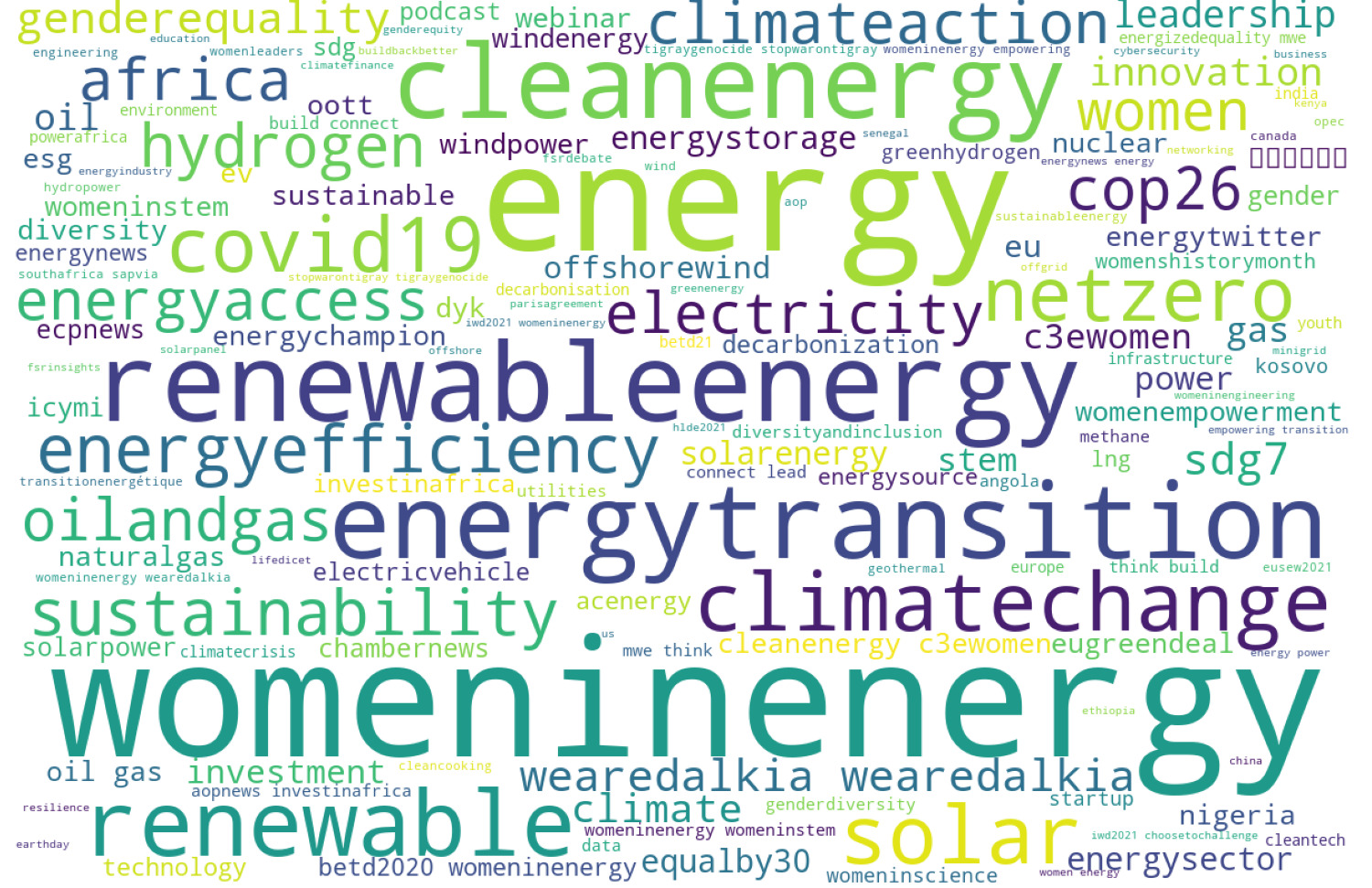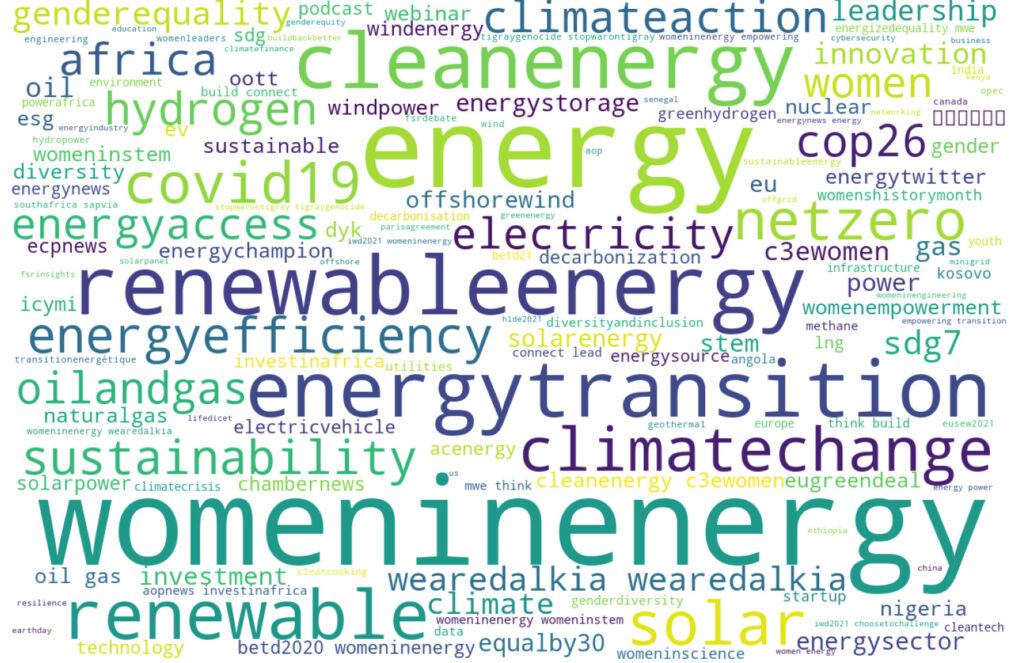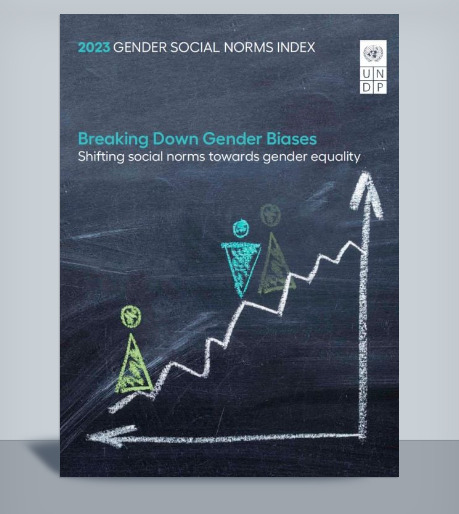
Hashtags are beautiful or know your bubble – What are the main hashtags in our Women in Energy Twitter Network?
Why do we care about Twitter hashtags at all?
During the starting phase of the implementation of the C3E International Initiative in Austria, it became clear to us – the Austrian Energy Agency, that we were not the first ones that identified a lack of female power in the energy supply system ecosphere. There are already several other initiatives, organizations and persons that put their efforts in this topic. Moreover, we assumed that many of them use twitter as a means of communication. We wanted to identify some of these key players of the scene and provide an overview what is going on, what is already out there and how to connect to this network. We wanted to get some insights for our communication efforts. Finally, analyzing social media data appeared to be a fancy and exciting new method of generating these insights. Now we want to do our part in promoting this loosely connected network so we share our methods, results and conclusions with you.
Promote the network
As part of the information gathering, we started to monitor our Twitter channels for interesting activities in late 2020. Since this process is tedious, we wrote a python script that did all the manual work of collecting and saving tweets that fit to our search query. After some months, we gathered an impressive amount of data. Actually, the amount of data became so huge that we needed a structured method to derive insights from these data sets. Shortly after some quick and dirty analyses, it became clear to us that the infamous word cloud would be a perfect starting point to increase our understanding of relevant topics and trends within our Twitter bubble. A word cloud helps us to identify the most relevant words in a text in a pleasing visual manner. This simply works by:
- Counting the appearances of the words and sort them accordingly.[1]
- Generating a picture with all the words, where the size of the font represents the relative number of occurrences.

Results
The hashtag is a mean of combining and collecting messages in connection with a certain topic. Nevertheless, it is only working if the target group is aware of it. Consequently, the hashtags do need a certain popularity to fulfill their purpose. Others get lost in the void of the endless stream of newly generated information and communication efforts. The goal of the analysis was to find some of the most effective #hashtags we and other users can use to communicate with the growing network of “women in energy”.
During the project phase, we collected well over 50,000 Tweets. 25,000 of them, so approximately 50 % used at least one hashtag. Within the data, we found around 80,000 #hashtags and identified 16,721 unique ones. Over 16,000 ifferent hashtags seemed a lot for a mechanic that was designed to support the gathering of people who are interested in a specific topic. In order to dig deeper into the data we first looked into which hashtags appeared how often by simply counting them. The results were quite interesting. 10,121 hashtags appeared only one time within our dataset. The following list displays the 20 most important hashtags of our dataset. Since this is a strictly quantitative analysis, we did not remove hashtags that are obviously not directly connected to the topic (e.g. #covid19, #africa, #women). This illustrates that topics of different disciplines often mix and can be used to promote #womeninenergy to a greater audience.
|
2879 |
|
|
2090 |
|
|
968 |
|
|
871 |
|
|
818 |
|
|
577 |
|
|
557 |
|
|
478 |
|
|
464 |
|
|
396 |
|
|
394 |
|
|
#sdg7 |
392 |
|
373 |
|
|
373 |
|
|
353 |
|
|
346 |
|
|
342 |
|
|
337 |
|
|
335 |
|
|
318 |
Table 1.1. Shows the most popular hashtags in the results of our search query. Take a look and get inspired by what worked in the past. It may also work in the future.
Follow this list!
We started to curate a list of noteworthy female players within the #energytwitter bubble. This list is by far not done. Feel free to have a look and get inspired by the diversity of female actors in the energy landscape. Did we miss somebody important? Or do you think you should be on that list? Let us know. Any way we would really appreciate if you would follow the list and increase the visibility of #womeninengery
Link to Twitter List: https://twitter.com/i/lists/1483509323783364608
Are you interested in recreating the word cloud? Here is how you can do it!
The word cloud was generated with a Python3 script and the “word cloud” package. Basically, all the credits for this should go to the devs. WordCloud makes it as easy as it gets to create a new word cloud image based on given data. All we did was to collect the hashtags we found in our twitter data to a single .csv file. One hashtag per row. This file was the input for our analysis. The rest is really just a set up for the image.
1. Import
# import necessary modules
from wordcloud import WordCloud
import matplotlib.pyplot as plt
2. Load Data
# read data with from “your_hashtag_data.csv” file
# make sure the encoding is correct. Twitter allows non-standard letters
with open(“your_hashtag_data.csv”, “r”, encoding=“utf-16”) as opf:
# read content
lines = opf.read().split(“\t“)
# combine content to a single string
lines = ” “.join(lines)
3. Initialize an instance of word cloud
# initiaize an instance of
word cloud and set the parameter
wordcloud = WordCloud(width=1200, # width of image
height=800, # hight of image
background_color=‘white’, # set background color
min_font_size=5,
# set minimal font size to 5
max_words=250,
# limit the number of words displayed
include_numbers=True,
# include numbers
prefer_horizontal=1,
# set the preference of the word orientation to horizontal
)
4. Generate the word cloud by calling generate_from_text with the data from the file
wordcloud.generate_from_text(lines)
5. Save the output
# plot the WordCloud image with matplotlib
plt.figure(figsize=(12, 8), facecolor=None)
plt.imshow(wordcloud)
# beautify the image a little
plt.axis(“off”)
plt.tight_layout(pad=0)
# save the image with report ready resolution
plt.savefig(“my_hashtag_wordcloud.jpg”, dpi=600)
# show the image
plt.show()
Contact Person: Lukas Zwieb, lukas.zwieb@energyagency.at
Österreichische Energieagentur – Austrian Energy Agency
[1]To avoid getting a list of ‘ands’, ’ Is’ and ‘thes’ we removed so called stop words. Words that are common in a language in all texts.


